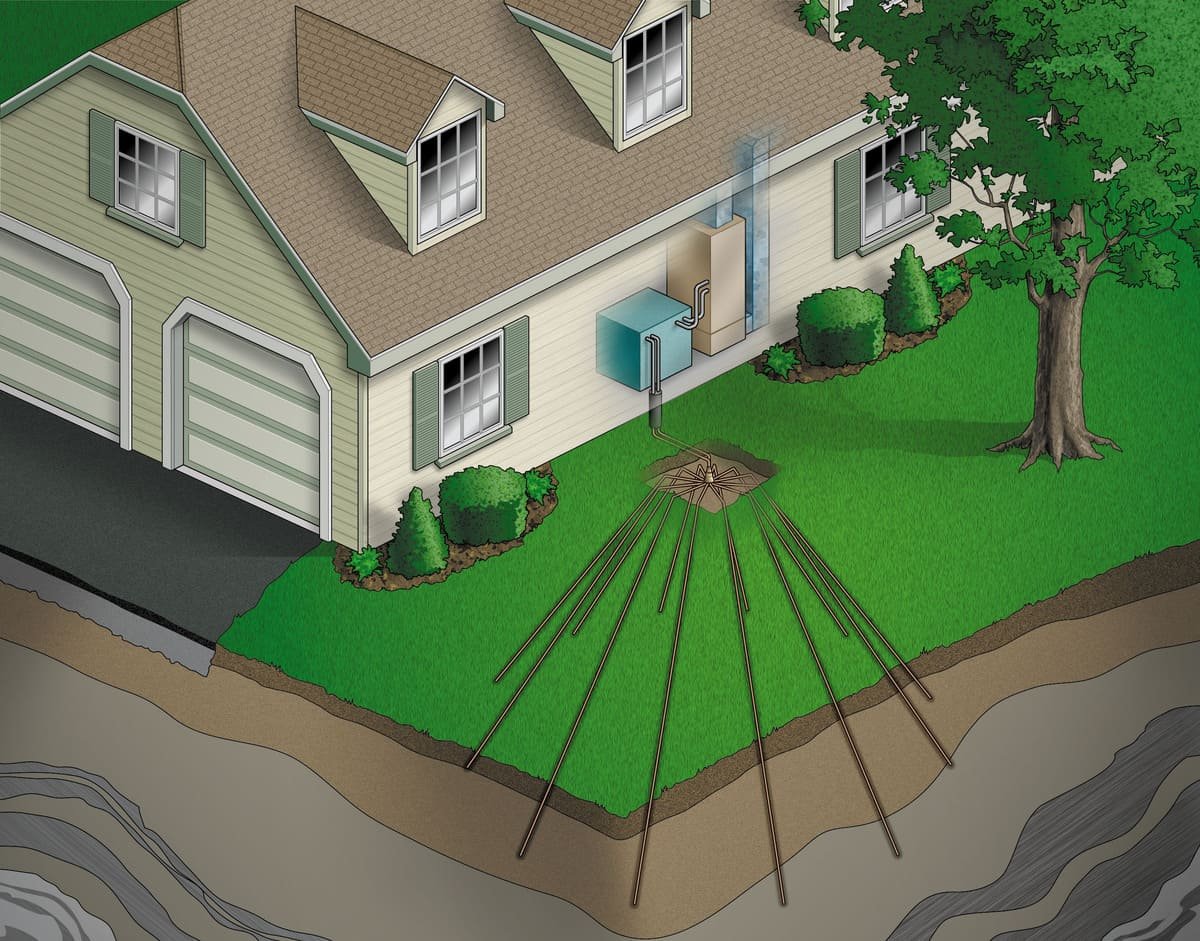Geothermal Heat Pumps Explained
Have you been considering more energy-efficient and eco-friendly ways to cool and heat your home in Idaho? You might want to consider a heat pump. The three main types of heat pumps connected by ducts: air-to-air, water source, and geothermal. Today we’ll focus on geothermal heat pumps.
There are currently three million Americans that use geothermal systems. Still, a report from the Department of Energy found that as many as 28 million households could benefit from the energy efficiency and cost savings offered by geothermal heating and cooling.
Not sure what geothermal HVAC is and whether it is worth it for your home? This blog covers everything you need to know.
What is Geothermal Heating and Cooling?
Geothermal heating and cooling systems—known as ground source heat pumps—heat and cool by transferring the heat to and from the ground. They maximize the fact that the planet’s underground temperature remains constant even as above-ground temperatures vary with the seasons.
These geothermal systems comprise numerous parts. Normally these include a:
Distribution system – uses either a water-to-water or forced air system to distribute cooled or heated air throughout the home
Geothermal heat pump – contains the heat exchanger and compressor and moves fluid through the geothermal loop
Geothermal loop – a network of buried piping, which either uses a nearby water source as a heat source/heat sink (open loop) or holds its fluids (closed loop)
How Does a Geothermal Heat Pump Work?
Like all heat pumps, geothermal systems extract heat from one location and transfer it to another. In this scenario, the heat extracted comes from the ground.
If you get at least twenty feet beneath the Earth’s surface, temperatures stay constant at least 50 to 60°F, whatever the season is. Geothermal heat pumps take advantage of this with underground piping, which circulates heat-carrying water or refrigerant.
In the summer, the geothermal system extracts the heat from your home’s inside and transfers it outside and into the ground, keeping you cool and fresh. In the winter, the reverse occurs: the ground’s heat is transported inside, where it keeps you warm.
So, you may be wondering, does geothermal work in cold environments? Yes, it does. That’s because of the constant underground temperatures that this incredible HVAC system can take advantage of.
How Much Do Geothermal HVAC Systems Cost?
Installing a geothermal system normally costs approximately forty percent more than a traditional HVAC system. Typically, you can expect to pay an all-in-cost of $20,000 to $40,000 for a standard-sized home. That involves permitting the outdoor and indoor components and the installation.
Is Geothermal Heating Worth the Cost?
There are a few benefits that Twin Falls homeowners making the change to a geothermal HVAC system can enjoy.
High efficiency means energy savings
The EPA highlights that geothermal heat pumps use twenty-five to fifty percent less electricity than standard heating and cooling systems. It can also reduce energy consumption by as much as seventy-two percent, even with average electric resistance heating combined with central air conditioning.
With those energy savings, you will notice a substantial difference in your monthly heating and cooling costs and utility bills.
Extended lifespan
The individual components of a geothermal heat pump heating and cooling system can last longer than standard HVAC systems.
Rather than the standard fifteen years for an air conditioner or furnace, you can get at least twenty-five years of dependable operation from your indoor geothermal components. You can also get much as five decades with the outdoor piping system. How cool is that?
No more fossil fuel
Are you looking for an eco-friendlier alternative to your combustion boiler or fuel furnace? Geothermal heat pumps are an excellent option. These heat pumps run completely on electricity, so you can avoid the carbon emissions of fossil-burning HVAC systems.
Is geothermal HVAC worth it?
The answer depends on your present energy bills and how long you wish to stay in your existing home.
Installing a geothermal heating and cooling system can cut your hot water, cooling, and heating bills by about sixty-five percent, so you could cover installation costs within ten years.
Further, tax credits of about thirty percent are available in some areas. Your utility company might also provide a rebate or credit for installing a geothermal HVAC system.
How Long Does Geothermal HVAC Equipment Last?
These geothermal HVAC systems are made to last. Your systems’ internal components will likely last twenty-five years, with ground loops made to last for more than fifty years.
If you weigh the cost savings of these geothermal heat pumps against their longevity, you can see why many homeowners are considering choosing geothermal—particularly new builds.
Upgrade Your Home With the Leading Geothermal Contractors in Twin Falls, Idaho
If you want to rest comfortably while enjoying energy savings and peace of mind, then reach out to us. Whether you want a brand-new geothermal heat pump system or just want a routine checkup, our team of HVAC specialists are on hand.
Don’t hesitate to call us today at +1 (208) 733-3252 or email us at experts@imhvac.com to schedule a consultation!
Let us know about your project, and we will point you in the right direction!



